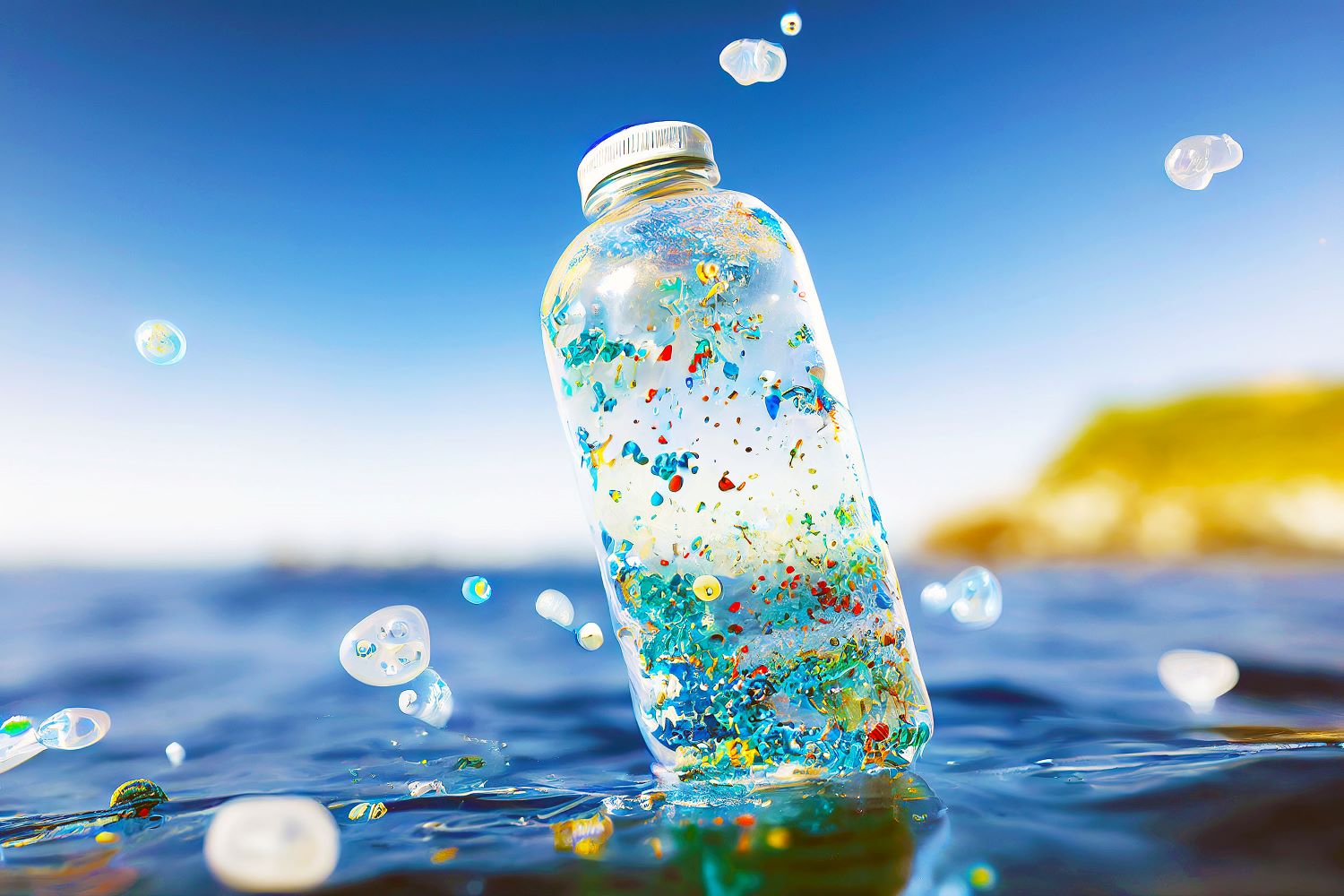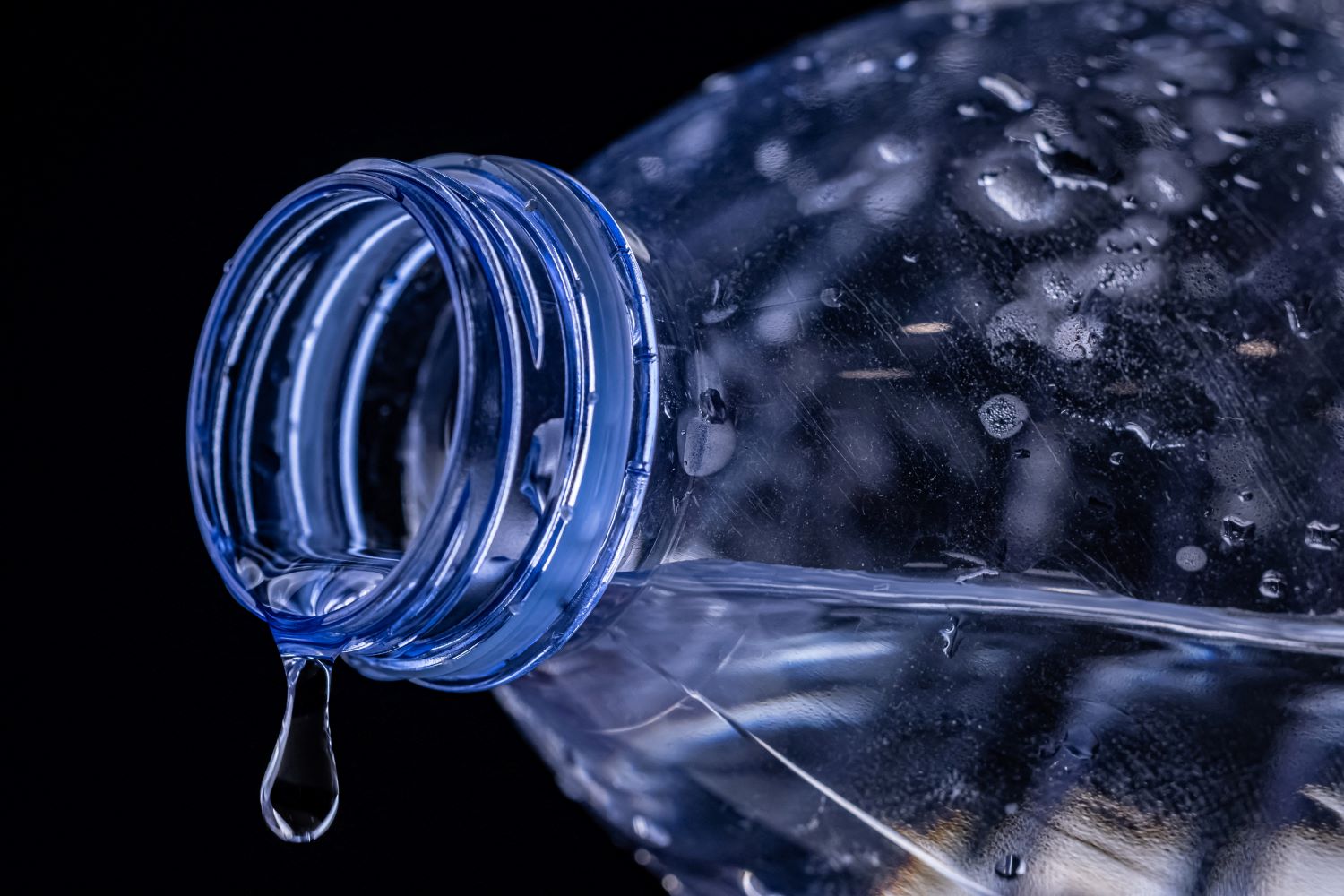In a pioneering study, researchers from the University of Michigan Health Rogel Cancer Center have unearthed a surprising revelation: bottled water available in stores may harbor significantly higher concentrations of plastic particles than previously assumed—nanoparticles so minute that they defy visibility under a microscope.
The plastic water bottle industry is experiencing rapid growth. Here’s why this is a serious concern
At 1,000th the width of an average human hair, nanoplastics are extraordinarily small, capable of penetrating tissues in the digestive tract or lungs and entering the bloodstream.
This allows them to distribute potentially harmful synthetic chemicals throughout the body and into cells, experts caution.
According to the study, one liter of water—equivalent to two standard-sized bottled waters—contained an average of 240,000 plastic particles from seven different types of plastics, with 90% identified as nanoplastics and the remainder as microplastics.
“This study, I have to say, is exceedingly impressive. The body of work that they put into this was really quite profound. … I would call it groundbreaking,” remarked Sherri “Sam” Mason, director of sustainability at Penn State Behrend in Erie, Pennsylvania, who was not involved in the study.
The findings underscore the long-standing advice from experts to opt for tap water stored in glass or stainless steel containers to minimize exposure, Mason suggested. This recommendation extends to other plastic-packaged foods and beverages as well.
“People don’t think of plastics as shedding but they do,” Mason noted.
“In almost the same way we’re constantly shedding skin cells, plastics are constantly shedding little bits that break off, such as when you open that plastic container for your store-bought salad or a cheese that’s wrapped in plastic.”
Mason previously co-authored a 2018 study that initially detected micro- and nanoplastics in 93% of bottled water samples from 11 different brands across nine countries.
In that previous research, Mason found an average of 10 plastic particles larger than a human hair and 300 smaller particles per liter of water.
However, five years ago, there was no method available to analyze these tiny fragments or determine if their quantity was higher.
“It’s not that we didn’t know nanoplastics existed. We just couldn’t analyze them,” Mason explained.
Nanoplastics are particularly concerning for human health, experts stress, as these tiny particles can infiltrate individual cells and tissues in major organs, potentially disrupting cellular functions and depositing chemicals known to interfere with the endocrine system, such as bisphenols, phthalates, flame retardants, per- and polyfluorinated substances (PFAS), and heavy metals.
Aside from the chemicals and toxic metals that plastics may transport, another underexplored area pertains to whether the plastic polymers themselves are harmful to the body.

The study’s novel method for detecting nanoparticles in bottled water relies on an adapted version of Raman spectroscopy, a laser-based technique that analyzes the chemical composition of cells by measuring molecular vibrations in response to light.
At present, the study’s algorithm can differentiate seven plastic types: polyamide, polypropylene, polyethylene, polymethyl methacrylate, polyvinyl chloride, polystyrene, and polyethylene terephthalate (PET).
“Based on prior studies, we expected most microplastics in bottled water to originate from leakage of the plastic bottle itself, typically made from PET plastic,” noted lead author Naixin Qian, a doctoral student in chemistry at Columbia University.
“However, we found a wide array of plastic types in bottled water, with PET particles being larger, while others were as small as 200 nanometers,” she added. “This is significantly smaller.”
Research has shown that PET plastic particles can break off when the bottle cap is repeatedly opened and closed, when the bottle is squeezed, or when exposed to heat, such as in a hot car.
“While nanoplastics can now be identified and categorized, further research is needed to answer various questions,” Yan pointed out. ”
For instance, if the nanoplastics found in bottled water didn’t originate from the bottle itself, where did they come from?
Our team is looking into the hypothesis that these additional nanoplastics could originate from the source water, possibly contaminated during some stage of the manufacturing process.”
Another critical query involves determining which type of water—bottled or tap—contains fewer nanoplastics and chemical residues.
“Several studies have reported lower levels of microplastics in tap water. Consequently, it’s reasonable to expect lower levels of nanoplastics in tap water as well, given their common sources,” Yan speculated. “We’re currently investigating this.”
Once inside cells, what happens to the plastic polymer and the endocrine-disrupting chemicals? Do they persist and interfere with cellular functions, or does the body successfully eliminate them?
“We know these microparticles are entering the body, and we know an even greater proportion of smaller nanoparticles are penetrating cells, but we don’t yet understand their precise destinations within the cell or their activities,” Stapleton stated.
“Nor do we know whether or how they exit the cell.”
However, the new technology is ideally suited for examining human tissue samples and should soon yield answers, Min assured.
“Our raw data consists of a series of images,” Min explained. “In fact, we have ample data demonstrating that once a particle has entered a specific location within a particular cell type, we can precisely pinpoint its spatial location.”
While scientists endeavor to address these and other questions, there are practical steps individuals can take to reduce their exposure to plastics, suggested Healthy Babies, Bright Futures’ Houlihan.
“We can opt against consuming food and beverages from plastic containers. We can wear clothes made of natural fabrics and select consumer products fashioned from natural materials,” Houlihan recommended.
“Simply put, we can evaluate the role of plastic in our daily lives and pursue alternatives whenever feasible.”
